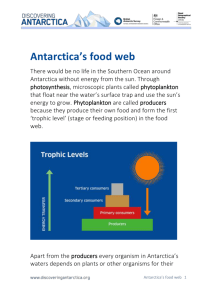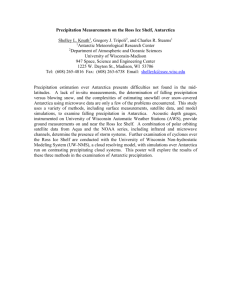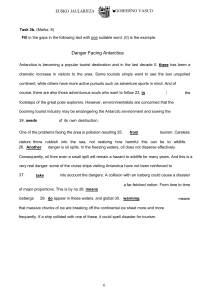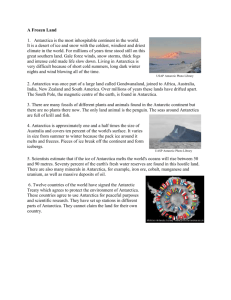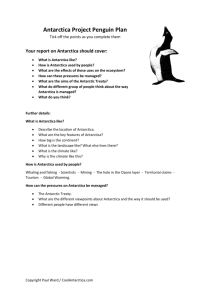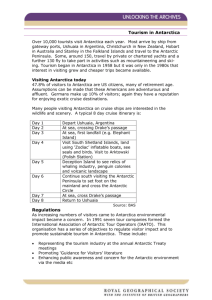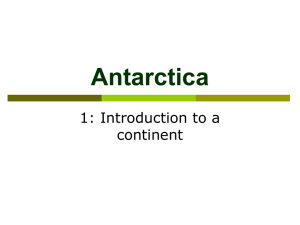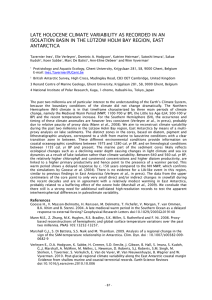Out of Antarctica
advertisement
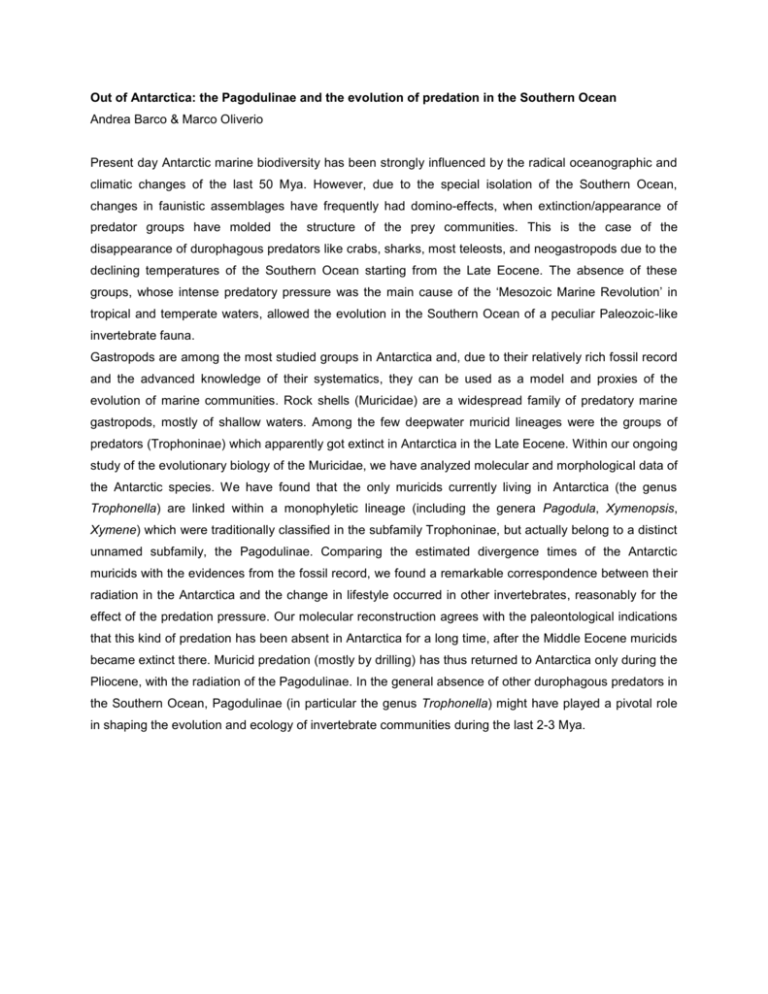
Out of Antarctica: the Pagodulinae and the evolution of predation in the Southern Ocean Andrea Barco & Marco Oliverio Present day Antarctic marine biodiversity has been strongly influenced by the radical oceanographic and climatic changes of the last 50 Mya. However, due to the special isolation of the Southern Ocean, changes in faunistic assemblages have frequently had domino-effects, when extinction/appearance of predator groups have molded the structure of the prey communities. This is the case of the disappearance of durophagous predators like crabs, sharks, most teleosts, and neogastropods due to the declining temperatures of the Southern Ocean starting from the Late Eocene. The absence of these groups, whose intense predatory pressure was the main cause of the ‘Mesozoic Marine Revolution’ in tropical and temperate waters, allowed the evolution in the Southern Ocean of a peculiar Paleozoic-like invertebrate fauna. Gastropods are among the most studied groups in Antarctica and, due to their relatively rich fossil record and the advanced knowledge of their systematics, they can be used as a model and proxies of the evolution of marine communities. Rock shells (Muricidae) are a widespread family of predatory marine gastropods, mostly of shallow waters. Among the few deepwater muricid lineages were the groups of predators (Trophoninae) which apparently got extinct in Antarctica in the Late Eocene. Within our ongoing study of the evolutionary biology of the Muricidae, we have analyzed molecular and morphological data of the Antarctic species. We have found that the only muricids currently living in Antarctica (the genus Trophonella) are linked within a monophyletic lineage (including the genera Pagodula, Xymenopsis, Xymene) which were traditionally classified in the subfamily Trophoninae, but actually belong to a distinct unnamed subfamily, the Pagodulinae. Comparing the estimated divergence times of the Antarctic muricids with the evidences from the fossil record, we found a remarkable correspondence between their radiation in the Antarctica and the change in lifestyle occurred in other invertebrates, reasonably for the effect of the predation pressure. Our molecular reconstruction agrees with the paleontological indications that this kind of predation has been absent in Antarctica for a long time, after the Middle Eocene muricids became extinct there. Muricid predation (mostly by drilling) has thus returned to Antarctica only during the Pliocene, with the radiation of the Pagodulinae. In the general absence of other durophagous predators in the Southern Ocean, Pagodulinae (in particular the genus Trophonella) might have played a pivotal role in shaping the evolution and ecology of invertebrate communities during the last 2-3 Mya.


